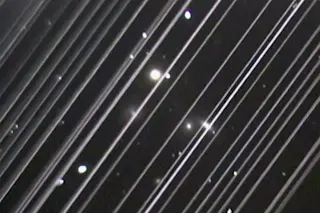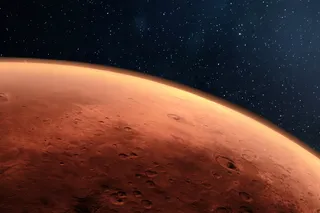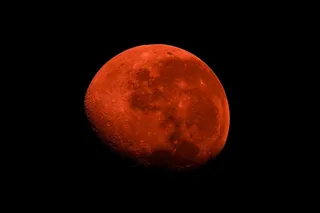Elon Musk’s company SpaceX launched 60 small satellites on May 23 as the beginning of the company’s Starlink program. They’re the vanguard of a planned 12,000-satellite-strong constellation that Musk intends to serve as the infrastructure for a cheap global satellite internet system.
The launch was successful — though it’s just the first step toward that goal. But groups of astronomers around the globe see potential problems in the bright light reflected off the satellites’ shiny exteriors.
Observers worldwide have been watching the bright satellites streak across the sky even with the naked eye. And now scientists are concerned that the satellites could eventually outnumber the visible stars in the night sky. That could prevent both scientists and more casual observers from getting a clear view of the cosmos.
Taking a Stance
Thousands of astronomers from around the world gathered in St. Louis, Missouri this week for the 234th meeting of the American Astronomical Society, the main professional group for American astronomers. The meeting is usually also well attended by astronomers from observatories worldwide. A subset of AAS members representing the society’s governing body adopted a statement about the satellites:
“The American Astronomical Society notes with concern the impending deployment of very large constellations of satellites into Earth orbit. The number of such satellites is projected to grow into the tens of thousands over the next several years, creating the potential for substantial adverse impacts to ground- and space-based astronomy. These impacts could include significant disruption of optical and near-infrared observations by direct detection of satellites in reflected and emitted light; contamination of radio astronomical observations by electromagnetic radiation in satellite communication bands; and collision with space-based observatories.”
They go on to note the technological advantages of satellite constellations for some users, and the astronomers say they’re willing to work with SpaceX and other companies to mitigate the effects of such technology on astronomy observations. Two other large bodies of astronomers, the International Astronomical Union and the British Royal Astronomical Society, have expressed similar concerns.
Finding Compromise
Musk has promised that the satellites will be barely visible once they settle into their final orbits, but astronomers aren’t fully convinced. It’s true that the satellites are brighter and more densely clustered just after launch, and fade as they settle into their final orbits. But it remains to be seen just how noticeable they will be, especially as more are added to their number.
“What’s raising the concern is the sheer number [of satellites],” says Jeff Hall, director of Lowell Observatory in Arizona and chair of the AAS Committee on Light Pollution, Radio Interference, and Space Debris. “If they turn out to be fairly bright and detectable, it’s a giant number of them.” By comparison, there are about 30 GPS satellites, Hall says. And all of those are located in high orbits that make them less visible.
But how big a problem will the Starlink satellites be? “The short answer is we don’t really know,” Hall says. “They might be fainter than you could see with the unaided eye. But modern telescopes are far more sensitive.” He says that AAS and other astronomy groups are in discussions with SpaceX, about how to mitigate impacts. The company is now cooperating by sharing orbital data on their satellites so astronomers can make better predictions as to how big a problem the satellites might be.
Then they can start talking about potential solutions, which Hall hopes can happen cooperatively between industry – of which SpaceX is only one part – and the science community. “It’s always better to be working collaboratively with folks rather than dug into your own corner,” Hall says.














